This post may contain affiliate links. See my disclosure policy.
Authentic Canadian Poutine Recipe made with crispy homemade fries covered in squeaky melty cheese curds and savory beef gravy. One of the best dishes you will ever put in your mouth.
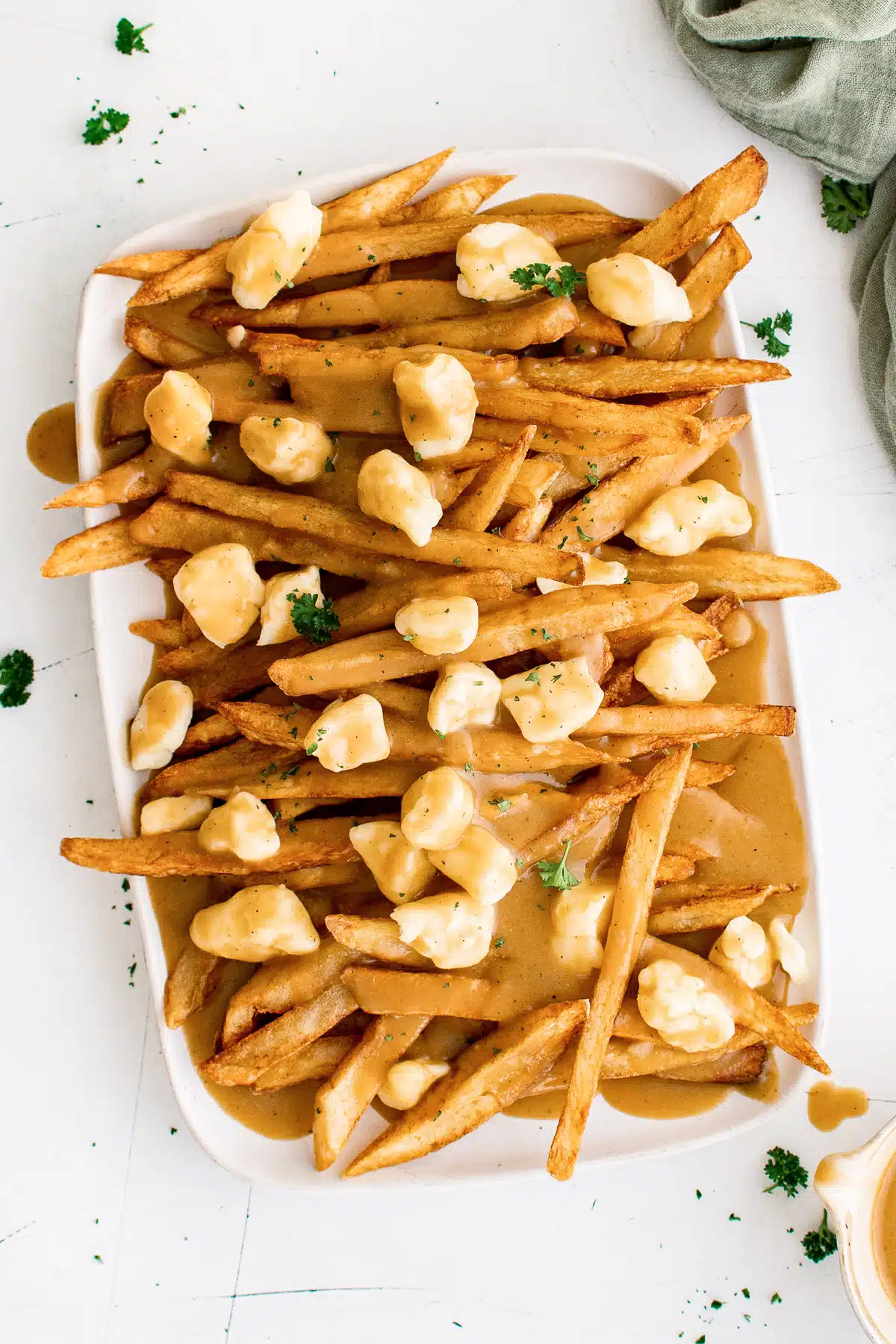
Crispy, salty homemade French fries and squeaky cheese covered in a savory brown gravy, poutine is the ultimate indulgence and comfort food. Learn how to make this delicious Canadian dish at home.
What is Poutine?
A dish consisting of French fries and cheese curds topped with brown gravy, Poutine was created in Quebec, Canada, sometime in the late 1950s. What was originally considered a late-night, greasy snack food that one would find at small diners, pubs, or roadside chip wagons, was eventually, many decades later, reimagined by chefs all across Canada, transforming poutine into an upscale and widely accepted dish. These days you’ll find many variations of poutine, from lobster to braised beef, chicken, pulled pork, ground beef, or sausage.
How to pronounce poutine
The correct Quebec French pronunciation of poutine is “poo-tin.” You will also hear English-speaking Canadians and visitors pronounce it how it looks in American English “poo-teen,” but that is incorrect.
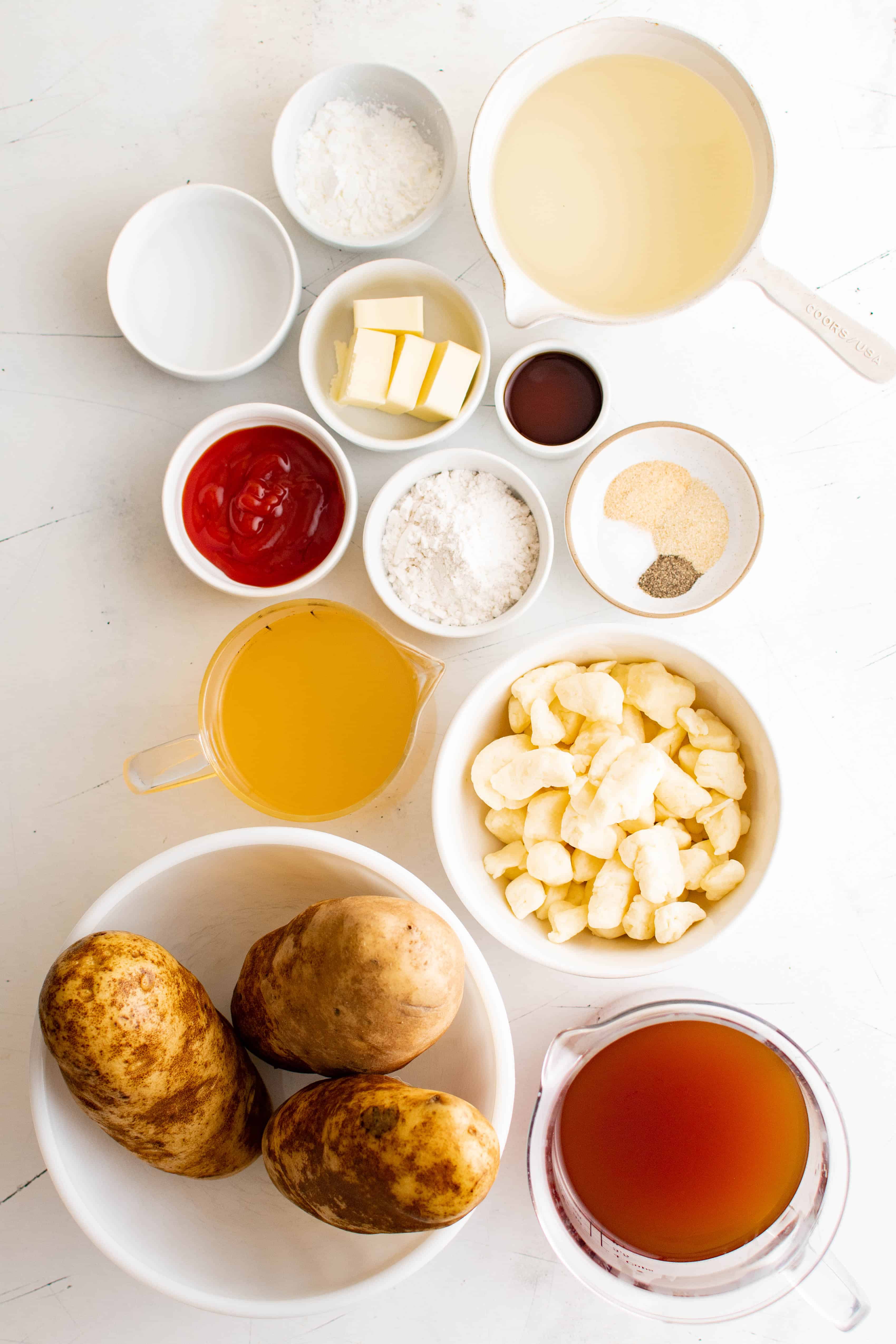
What is Poutine Made Of
Fries: Medium-thick fries with soft and fluffy insides and crunchy outsides. Sometimes the fries will be fried twice for extra crispy outsides.
Poutine gravy: Made with a combination of chicken and beef stock and personalized with seasonings and spices. The sauce should not be too thick or too thin. In Canada, poutine sauce is so popular that they sauce packets and canned gravy in the grocery store. Vegetarian versions of poutine gravy are also quite popular.
Cheese curds: You may be unfamiliar with cheese curds unless you live in Canada or the Midwestern US. Basically, cheese curds are made by separating the whey (the liquidy part of milk) from the curds. It’s a whole process which I will save for a separate post, but finding the freshest cheese curds is key to making the best poutine. Cheese curds have a mild, somewhat salty flavor with a rubbery texture. Fresh curds should squeak when bitten into. After 12 hours, cheese curds will lose most of what characterizes them as fresh (particularly the squeak) due to moisture entering the curd.
Substitute for Cheese Curds in Poutine
Cheese curds are the perfect addition to poutine as they are warmed by the hot gravy but not melted completely. In other words, they maintain their shape (and appealing squeak) without getting lost in the gravy. When fresh cheese curds are not available, mozzarella cheese or mozzarella cheese balls are considered an acceptable alternative.

How to Make Poutine
1. Peel the potatoes and cut them into 1/2-inch thick strips. Transfer the potatoes to a large bowl filled with cold water and submerge for at least 1 hour or up to 24 hours.
2. Rinse the potatoes with three changes of clean water to remove as much starch as possible then drain completely. Lay the potatoes out on clean towels or paper towels and dry them completely before frying.
3. Preheat a deep-frying pan or large Dutch oven with 3 inches of vegetable oil to 350 degrees Fahrenheit. Working in batches, carefully add 10-12 potato strips into the hot oil and fry for 5-6 minutes, or until they are golden brown and crispy.

4. Repeat this process, reheating the oil to 350 degrees Fahrenheit each time before adding additional potato strips. Remove the fries from the oil and transfer them to a cooling rack to drain before seasoning them generously with salt and any other desired seasonings like garlic powder, onion powder, or paprika.

5. To make the gravy, melt the butter in a large skillet set over medium heat. Once melted, whisk in the flour and cook until it is a golden-brown color.
6. Add the ketchup, Worcestershire sauce, garlic powder, onion powder, black pepper, and salt. Mix well and cook for 3 minutes, whisking continuously. Slowly add the beef broth and the chicken broth, whisking well to remove any clumps. Reduce heat to medium-low and simmer for 10 minutes, stirring often.
7. Just before the gravy is done simmering mix together the cornstarch and the water in a small bowl. Whisking the whole time, slowly add the cornstarch slurry to the gravy. Cook over low heat for 5 minutes, or until thickened.

8. To assemble, place the hot fries in a shallow serving dish and top with the desired amount of (room temperature) cheese curds. Drizzle with gravy.
9. Serve garnished with fresh parsley and fresh cracked black pepper, if desired.
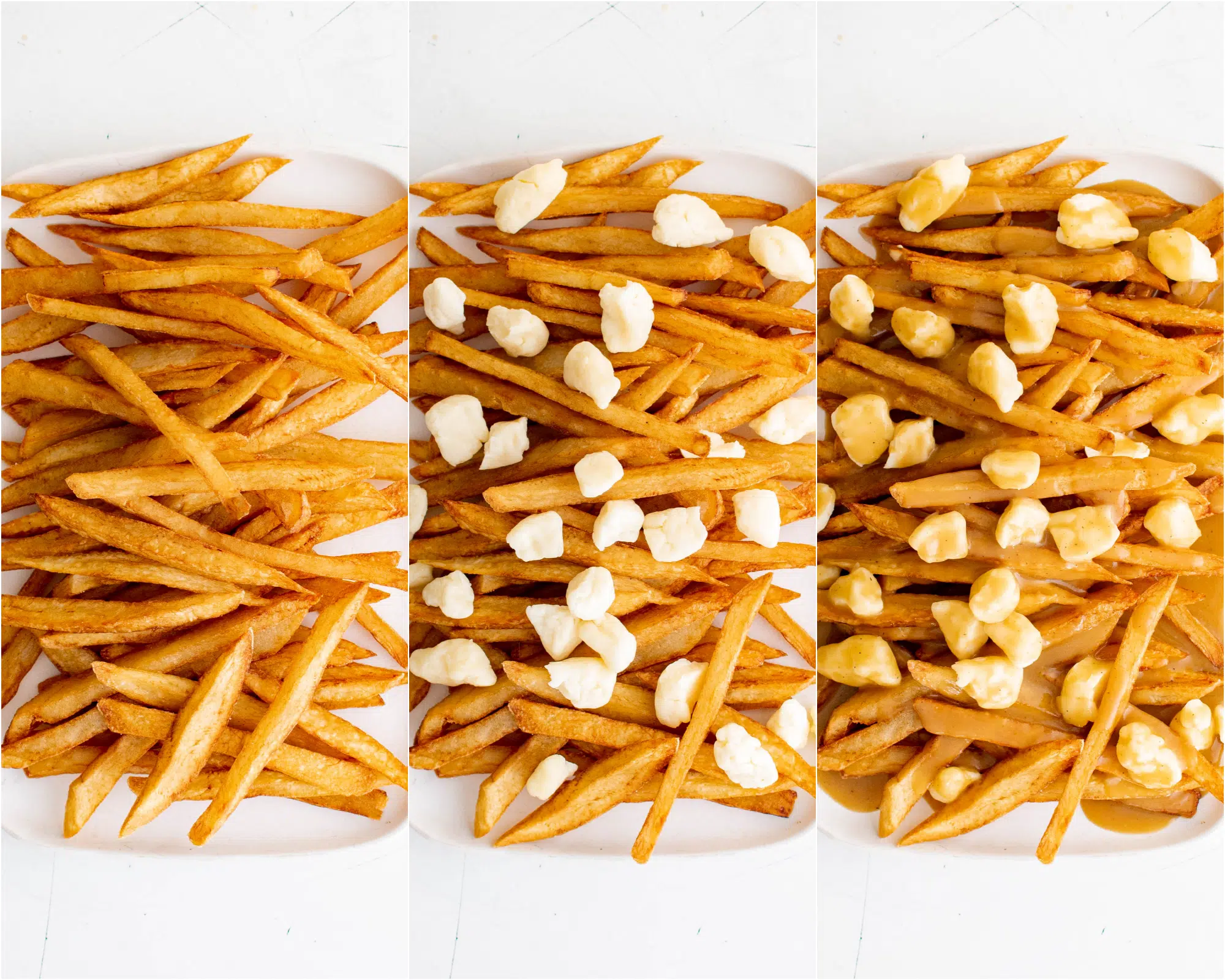
Storage and Reheating
Truth? The only part of poutine (the fries, cheese curds, and gravy) that is worth saving is the gravy. Ok, the fries, too. However, if your plan is to reheat the fries for a second batch of assembled poutine, then you’ll definitely want to reheat them in an air fryer to get them crispy again. The cheese curds, unfortunately, lose their freshness after about 12 hours, so plan on eating those right away.
Store leftover gravy in a airtight container in the refrigerator for up to three days. Reheat over medium to medium-low heat. If necessary, thin the thickened gravy with a little broth until the desired consistency is reached.
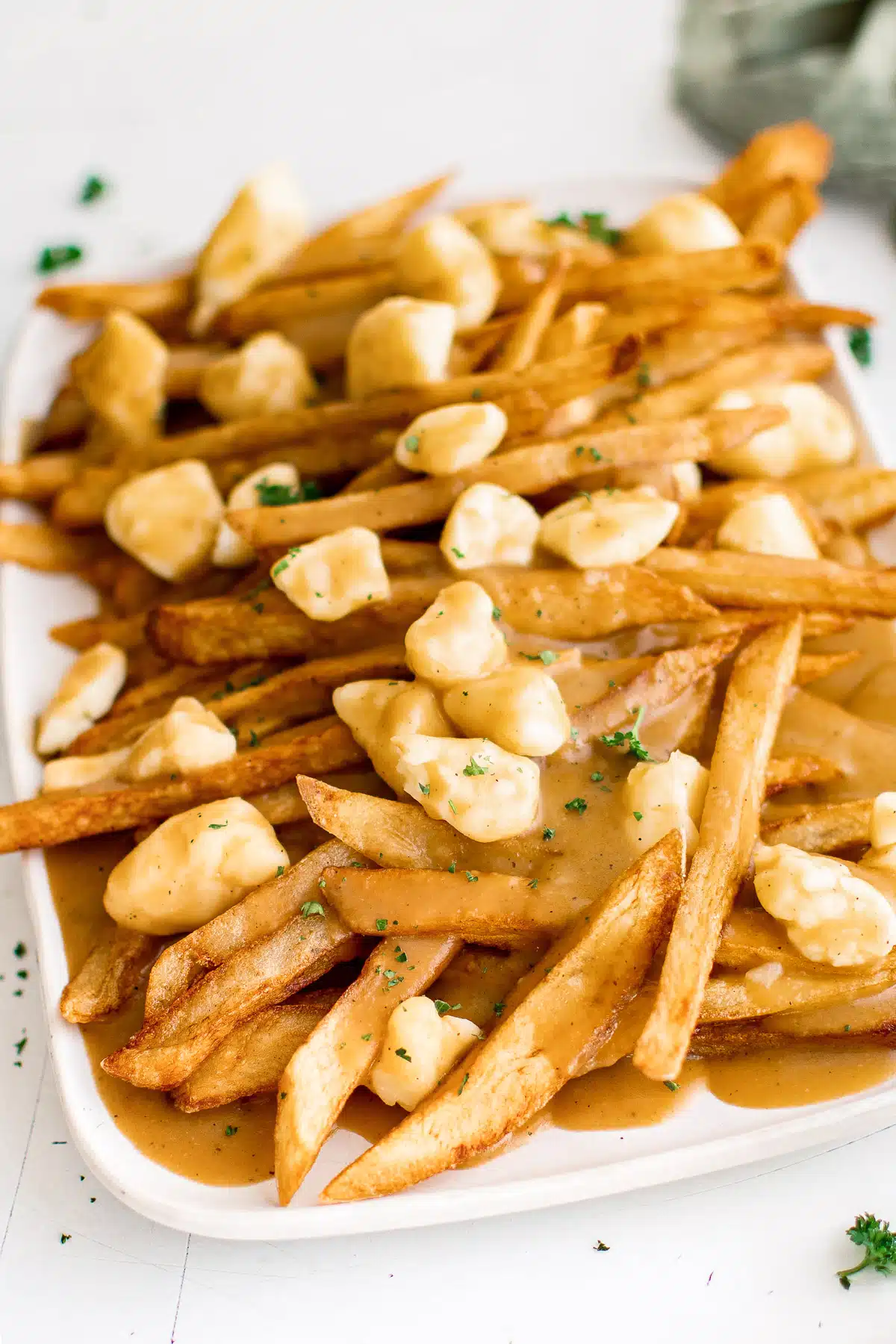
How to Eat Poutine
You’ll want to enjoy your gravy-soaked fries and cheese curds while everything is still hot, the fries are still crispy, and yes, the cheese is still squeaky. In other words, poutine is best enjoyed right away. It’s also recommended to enjoy your fries with a fork – rather than your hands. Similar to American chili cheese fries, things get super messy, super fast. Utensils help.
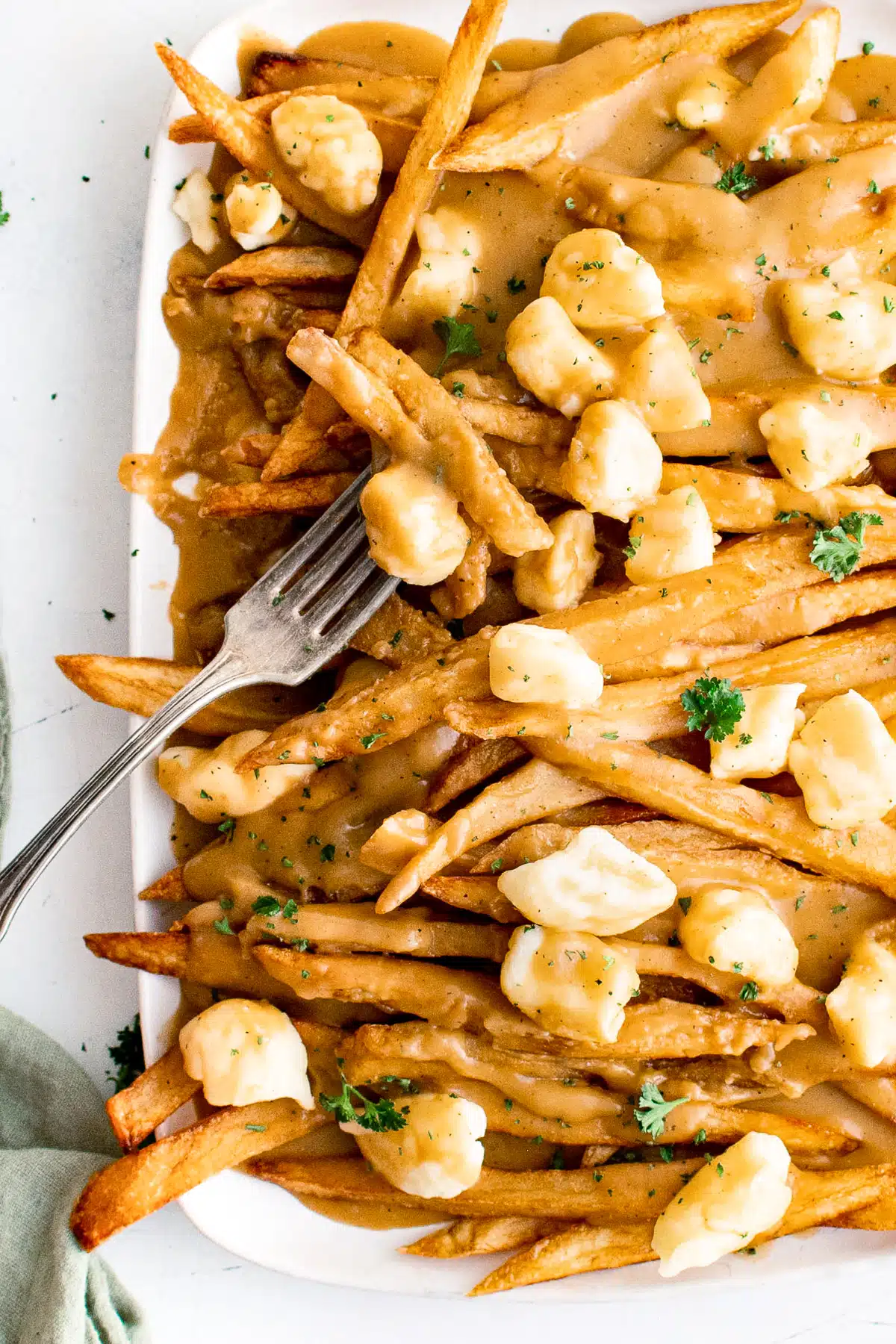
More Delicious Recipes
- Carne Asada Fries
- Biscuits and Gravy
- Alfredo Sauce Recipe
- Hashbrown Casserole
- Creamy Chicken Noodle Soup
If you try making Poutine, please leave me a comment and let me know! I always love to hear your thoughts.
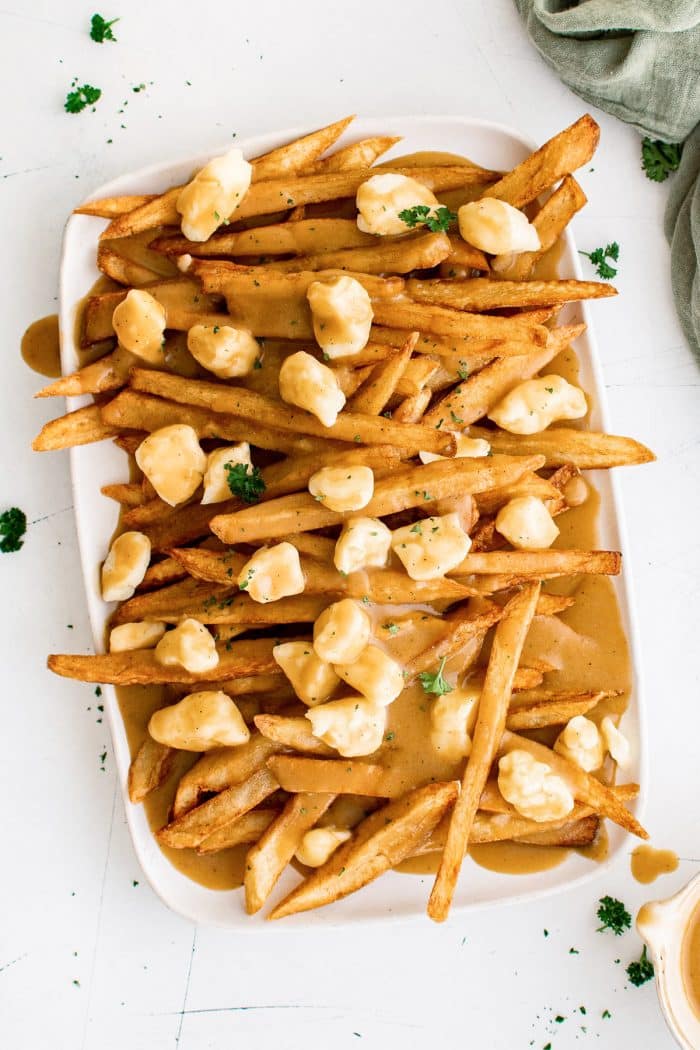
Poutine Recipe
Ingredients
- 3 pounds Russet Potatoes
- Vegetable oil for frying
- 4 tablespoon butter
- 3 tablespoon all-purpose flour
- 1½ tablespoon ketchup
- 2 teaspoon Worcestershire sauce
- ½ teaspoon garlic powder
- ½ teaspoon onion powder
- ¼ teaspoon ground black pepper
- ¼ teaspoon salt
- 2 cups beef broth
- 1 cup chicken broth
- 2 tablespoon water
- 2 tablespoon cornstarch
- 1 cup white cheddar cheese curds, or mozzarella balls, at room temperature
Instructions
- Peel the potatoes and cut them into ½-inch thick strips. Transfer the potatoes to a large bowl filled with cold water and submerge for at least 1 hour (or overnight in the refrigerator).
- Rinse the potatoes with three changes of clean water to remove as much starch as possible (these extra steps make for crispier fries). Drain completely and transfer the clean towels or paper towels. Dry completely.
- Preheat a deep-frying pan or a large Dutch oven with 3 inches of vegetable oil to 350 degrees Fahrenheit. Working in batches, add 10-12 potato strips into the hot oil and fry for 5-6 minutes or until they are golden brown and crispy.
- Reheat the oil to 350 degrees Fahrenheit and repeat this process until all of the potatoes have been fried. Remove the fries from the oil and transfer them to a cooling rack to drain before seasoning them generously with salt and any other desired seasonings like garlic powder, onion powder, or paprika
- To make the gravy recipe, melt the butter in a large skillet set over medium heat, then whisk in the flour and cook until it is a golden-brown color.
- Add the ketchup, Worcestershire sauce, garlic powder, onion powder, black pepper, and salt. Mix well and cook for 3 minutes, whisking continuously.
- Slowly add the beef broth and the chicken broth, whisking well to remove any lumps. Reduce the heat to medium-low and simmer for 10 minutes, stirring often to prevent the gravy from burning.
- Meanwhile, mix together the cornstarch and the water in a small bowl to create a slurry.
- Reduce the heat to low and slowly add the cornstarch slurry to the gravy, whisking the whole time. Cook for 5 minutes or until thickened.
- To assemble, place the hot fries in a shallow serving dish and top with the desired amount of (room temperature) cheese curds. Ladle gravy over the top.
- Best served immediately.
Notes
- This recipe is also great with frozen fries, air fryer french fries, or baked fries.
Nutrition
Nutrition information is automatically calculated, so should only be used as an approximation.



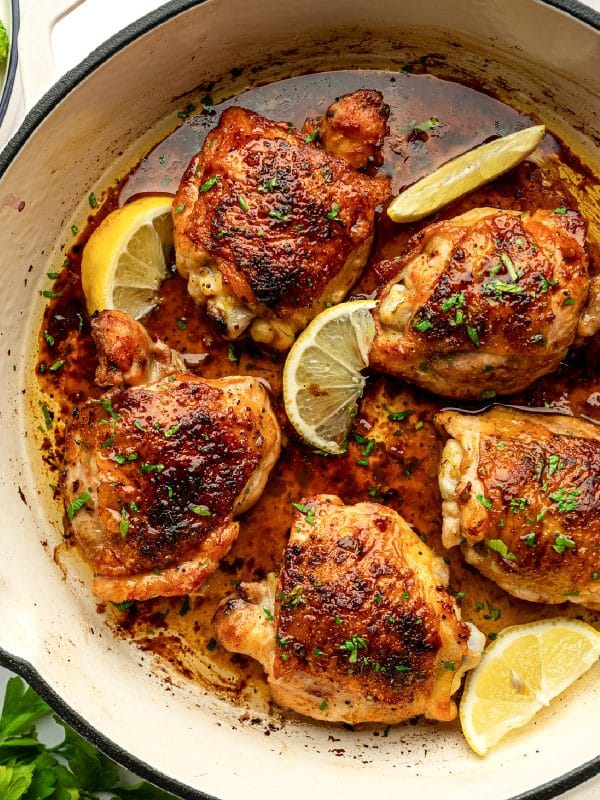
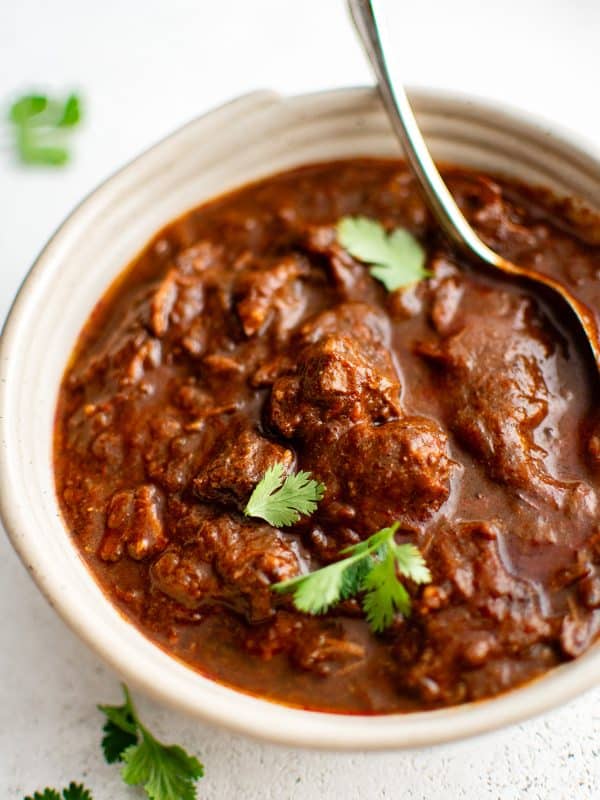
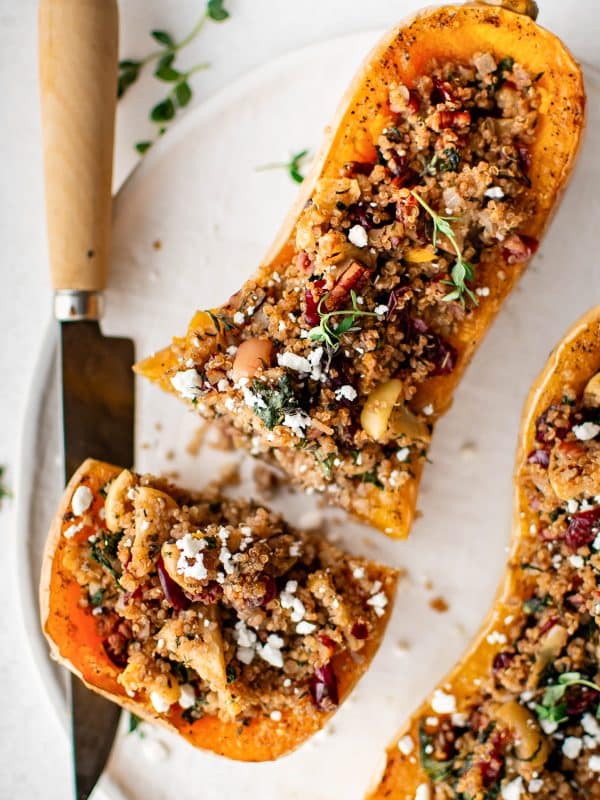









Saying “Authentic Canadian Poutine recipes” is pure cultural appropriation! And it means nothing as “Authentic Portuguese Poutine recipe” means nothing. What do you mean? Authentic Québec poutine recipe made elsewhere in Canada? Because authentic poutine recipes aren’t coming from anywhere else apart from Quebec. What does exist though, is authentic ROC (rest of Canada) twists on Québec Poutine. Wich is good. Authentic Canadian Poutine… Not good nor true.. Even more when the dish is fairly new in the ROC while it’s 70 years old in Québec. You wouldn’t argue for Authentic American native Bannock (I’m sure you know what it is) recipes when it’s Scottish and was brought here. Poutine is the same. It was brought to the ROC from PQ. Québec is very touchy regarding its culture. Even for poutine… The only Québec thing that is ok to call Canadian is maple syrup. It’s self-explanatory. It’s because we can’t make syrup from a fleur de lys ⚜….. Lol
But I admit that your introduction was very clear about the origin of the meal and I salute your work for that. In fact, the article was interesting and good. You nailed the “late night meal” thing. We wouldn’t come home after our late 3am clubbing without having a large poutine. But you just can’t infer poutine is a Canadian meal even though Québec is a Canadian province. Not in the constitutional context anyway. Maybe something like: Canadian twist on PQ Poutine!. It’s like something typical of California or Texas will not habitually be called American, it will be called a Texan or Californian thing. Maybe someone from somewhere else from North America would amalgate and say American….
BTW, I’m no separatist or junk like that, but I also know that apart from fairplay, a remnants from the British, saying sorry and please all the time as well as the back beacon, there are not lots of things that are “Canadian”. This country is made up of 10 little countries … It’s not just Québec and its french speaking particularity. It’s the constitutional conundrum that made the ROC, this illusion of a monolithic English Canada . Ontario has a totally different culture from Saskatchewan, Newfoundland or Alberta… In fact, Ontario and Québec are the most resembling provinces and maybe BC. In my opinion I should say. That being said, it’s only If you can go over the strangeness of being confronted to a language you’re not fluent in., a thing that a globetrotter like you don’t seem to be impressed with!
Have a great day!
Pat
Canada PQ